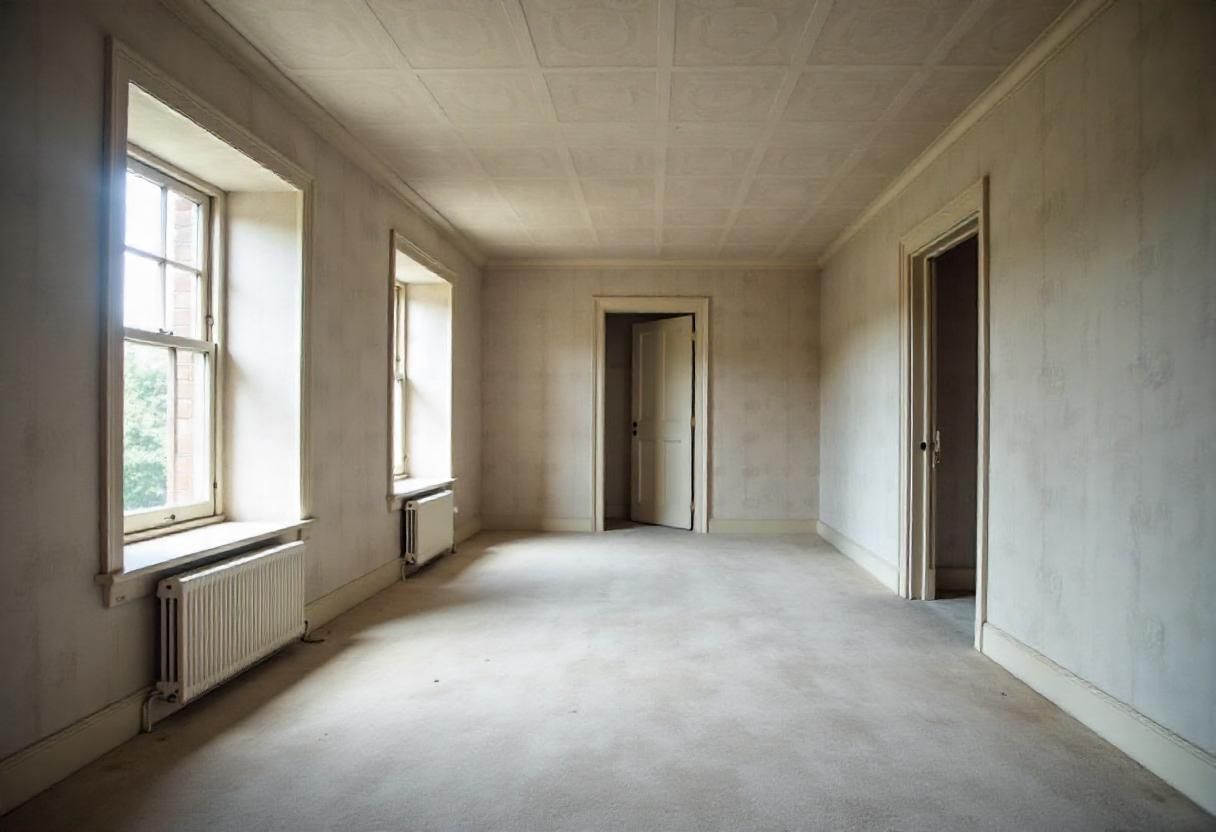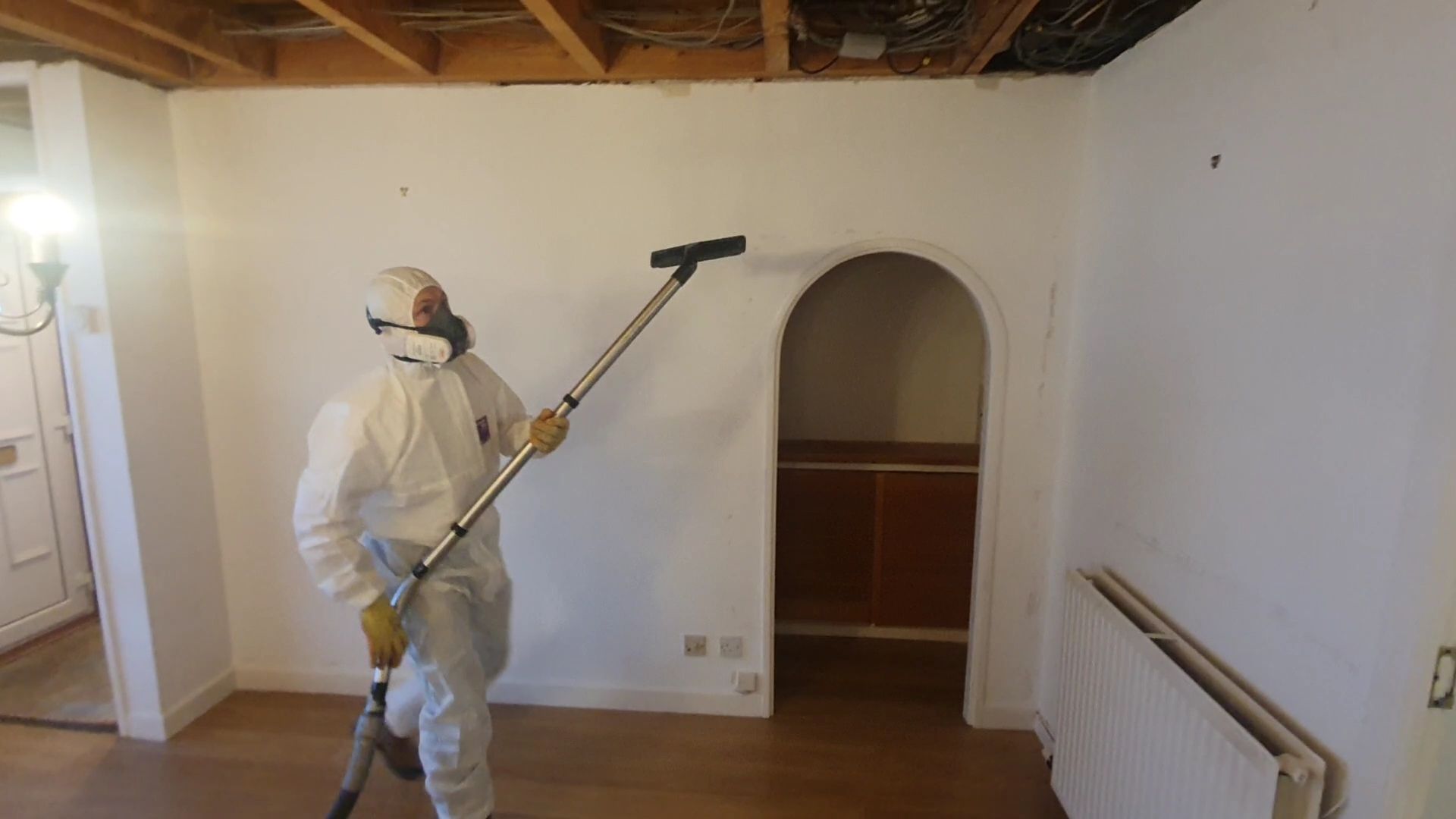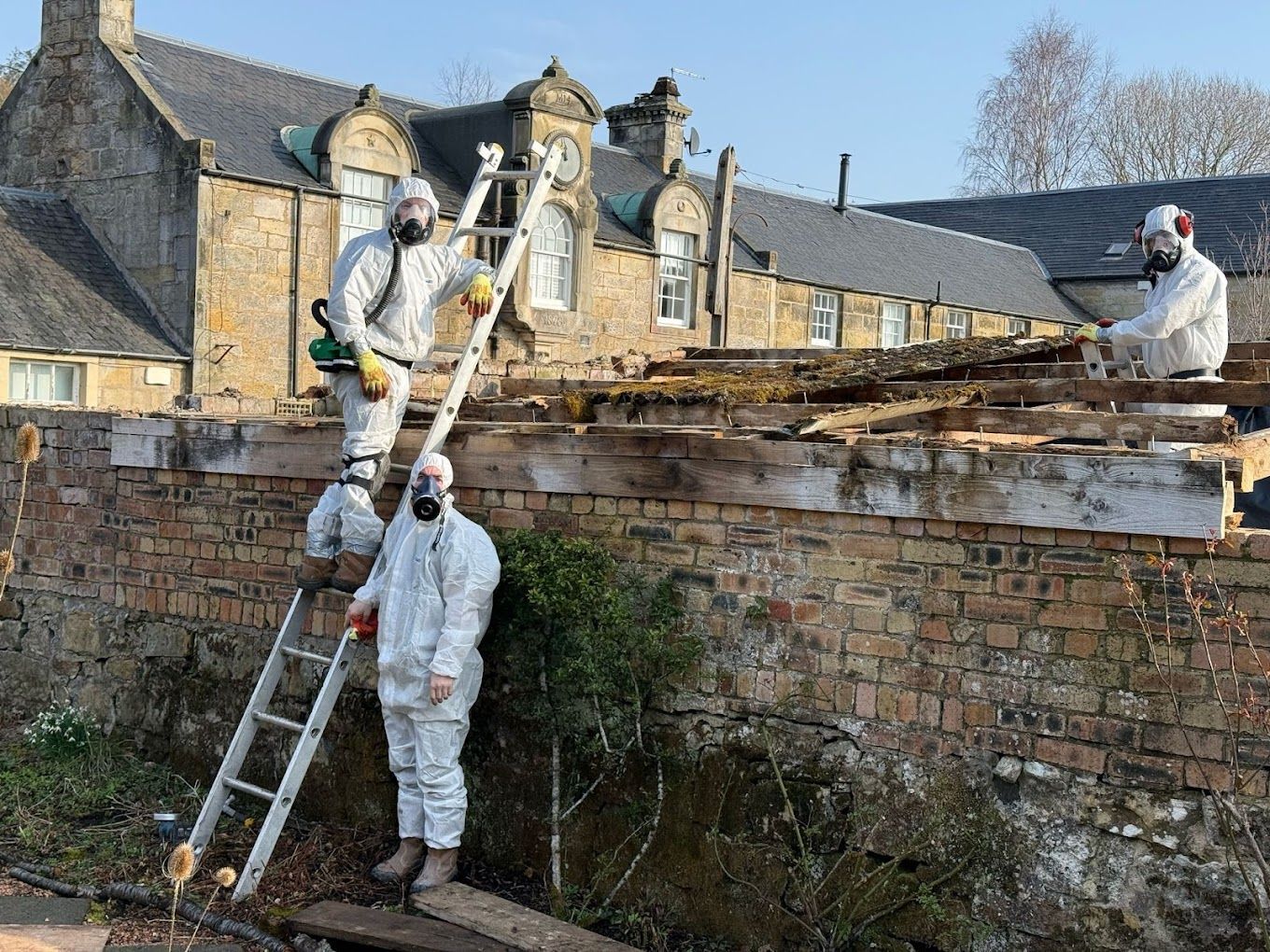READY TO GET STARTED?
GET YOUR FREE QUOTE
📞 Call now: 0330 912 8726 ✉️ Message us for call back below
Quick responses guaranteed. We're here to help!
We will get back to you as soon as possible
Please try again later
Does My Landlord Have to Tell Me About Asbestos UK? Essential Guide
Stepping into a new rental property should be an exciting time, filled with the promise of a fresh start. But what if hidden within the walls and ceilings lurks a danger you can't see? Asbestos, a once-common building material, can pose serious health risks if disturbed.
In the UK, landlords have a legal responsibility to manage asbestos in their properties, but what exactly does that mean for tenants? This guide provides a comprehensive overview of asbestos regulations, landlord responsibilities, and tenant rights, empowering you with the knowledge to ensure your safety and well-being in your rental home.
Key Takeaways:
- Landlord Responsibility: UK landlords are legally obligated to manage asbestos in their rental properties.
- Tenant's Right to Know: Tenants have the right to be informed about the presence and condition of any asbestos-containing materials
Understanding Asbestos and Its Risks

Asbestos, once lauded for its fire-resistant and insulating properties, is now recognised as a serious health hazard. This fibrous mineral, widely used in construction throughout much of the 20th century, can release microscopic fibers that, when inhaled, can cause devastating diseases.
What is Asbestos?
Asbestos is not a single substance but rather an umbrella term for six naturally occurring silicate minerals. These minerals are composed of long, thin fibers that are incredibly strong and resistant to heat, electricity, and corrosion. This made them ideal for use in a wide range of building materials, from insulation and roofing to floor tiles and textured coatings.
The danger of asbestos lies in its ability to release these microscopic fibers into the air. Like tiny daggers, these inhaled fibers pierce the lungs and other tissues, leaving a trail of inflammation and scarring that can culminate in devastating illnesses, including
- Lung Cancer: Asbestos exposure significantly increases the risk of lung cancer, especially for smokers.
- Mesothelioma: A rare and aggressive cancer that primarily affects the lining of the lungs, abdomen, or heart.
- Asbestosis: A chronic lung disease characterized by scarring and inflammation, leading to breathing difficulties.
The health impacts of asbestos are so severe that two illnesses, mesothelioma and asbestosis, are exclusively caused by asbestos exposure. This highlights the importance of understanding the risks and taking necessary precautions.

Asbestos Regulations in the UK
In the UK, the Control of Asbestos Regulations 2012 governs the management of asbestos in properties. These regulations place a legal duty on landlords to manage asbestos risks in their rental properties, ensuring the safety of tenants and compliance with legal standards.
The Health and Safety Executive (HSE) provides comprehensive information on the Control of Asbestos Regulations and offers guidance on best practices for compliance. Landlords must familiarise themselves with these regulations and adhere to them strictly to avoid legal consequences, including hefty fines and potential criminal charges.
Overview of Asbestos Regulations
The Control of Asbestos Regulations 2012 outlines key requirements for landlords:
- Locate and Assess: Landlords must take reasonable steps to locate any materials likely to contain asbestos within their properties and assess their condition.
- Manage and Maintain: Asbestos-containing materials (ACMs) must be properly managed and maintained to prevent fiber release and exposure.
- Asbestos Management Plan: Landlords must have a written asbestos management plan in place for their rental properties. This plan should outline procedures for monitoring, maintaining, and safely removing asbestos when necessary.
These regulations apply to all non-domestic premises, including rental properties, ensuring that tenants are protected from the risks of asbestos exposure.

Landlord’s Duties Regarding Asbestos
Landlords have a clear legal obligation to manage asbestos in their rental properties. This responsibility stems from various regulations, including the Control of Asbestos Regulations 2012 and the Landlord and Tenant Act 1985.
Key duties of landlords:
- Locate and assess ACMs: This involves conducting an asbestos survey to identify any asbestos-containing materials in the property.
- Prevent asbestos exposure: Take necessary measures to prevent tenants and others from being exposed to asbestos fibers.
- Maintain ACMs in a safe condition: Ensure that any asbestos-containing materials are in good condition and do not pose a risk of fiber release.
- Provide information to tenants: Inform tenants about the presence and location of any identified ACMs.
Duty to Inform Tenants
One of the most crucial aspects of a landlord's responsibility is the duty to inform tenants about the presence and condition of any asbestos-containing materials (ACMs) in the property.
This transparency allows tenants to make informed decisions about their living environment and take necessary precautions to avoid exposure.
Failure to inform tenants about asbestos can have significant legal consequences for landlords, including fines and potential liability for any health issues arising from asbestos exposure. Tenants have a right to know about asbestos in their property, and landlords must fulfil this obligation.
Conducting an Asbestos Survey
To comply with legal obligations, landlords should conduct an asbestos survey. This involves hiring a qualified and accredited asbestos surveyor to inspect the property and identify any potential ACMs.
The survey will involve a thorough inspection of the property, including:
- Visual inspection of accessible areas.
- Sampling of suspect materials for laboratory analysis.
- Assessment of the condition of any identified ACMs.
The surveyor will then produce a comprehensive report detailing the location, type, and condition of any asbestos found. This report will also include recommendations for managing the asbestos, such as encapsulation, enclosure, or removal.
Managing Asbestos in the Property
Once an asbestos survey has been conducted, landlords must develop and implement an effective asbestos management plan. This plan should outline procedures for:
- Monitoring: Regularly inspecting ACMs to assess their condition and identify any signs of deterioration.
- Maintaining: Taking steps to prevent damage to ACMs and ensure they remain in a safe condition.
- Safely Removing Asbestos: When necessary, arranging for the safe removal of asbestos by licensed professionals.
The asbestos management plan should also include information on:
- The location and condition of all identified ACMs.
- Procedures for dealing with emergencies, such as accidental damage to ACMs.
- Procedures for dealing with unexpected asbestos discoveries during renovation or maintenance work.
Asbestos Management Plan
The asbestos management plan is a living document that should be reviewed and updated regularly to ensure its effectiveness. Landlords should also:
- Make the plan readily available to tenants, contractors, and any other relevant parties.
- Keep detailed records of all asbestos surveys, management plans, and any removal or remediation work carried out.
Asbestos Removal and Remediation
Asbestos removal and remediation are specialized tasks that should only be carried out by licensed professionals. These experts have the necessary training, equipment, and expertise to handle asbestos safely and prevent fiber release during the process.
Landlords should ensure that any asbestos removal or remediation work is conducted in accordance with the Control of Asbestos Regulations 2012 and the Health and Safety Executive's guidance.
When to Remove Asbestos
Asbestos removal should only be considered when:
- Damaged or Deteriorating: The ACMs are in poor condition and pose a risk of fibre release.
- Likely to be Disturbed: Renovation or maintenance work is planned that could disturb the ACMs.
In other cases, asbestos can often be safely managed in place through encapsulation or enclosure.

Legal Consequences of Non-Compliance
Landlord Responsibilities and Penalties for Non-Compliance in Scotland
While the duty to manage asbestos applies across the UK, the penalties for failing to do so in Scotland differ slightly. Landlords must understand these consequences to ensure they are compliant with the law and protecting their tenants.
Potential Penalties:
Landlords who fail to comply with asbestos regulations in Scotland could face:
- Hefty fines: These can range from £20,000 to unlimited amounts, depending on the severity of the breach.
- Imprisonment: In the most serious cases, landlords could face up to two years in prison.
- Compensation claims: Tenants who become ill due to asbestos exposure can sue their landlord for damages.
- Enforcement notices: The HSE can issue notices requiring landlords to take action to rectify breaches.
Enforcement: The Health and Safety Executive (HSE) and local authorities enforce asbestos regulations in Scotland. They have the power to inspect properties, issue enforcement notices, and investigate incidents.
Key Legislation: The Control of Asbestos Regulations 2012 is the primary legislation governing asbestos management in Scotland.
Professional Advice: Landlords should seek professional advice from qualified asbestos surveyors and consultants to ensure they are meeting their legal obligations and protecting their tenants.
Conclusion
Landlords have a critical responsibility to manage asbestos in their rental properties. By conducting thorough asbestos surveys, developing comprehensive management plans, and communicating effectively with tenants, landlords can ensure compliance with legal obligations, enhance tenant safety, and preserve property value
Protect your tenants and your property. Core Asbestos Scotland provides comprehensive asbestos surveys, management plans, and removal services to help landlords in Scotland meet their legal obligations and maintain a safe environment.
Contact
84 Commercial Street
Leith
Edinburgh
EH6 6LX
Savoy Tower
77 Renfrew Street
Glasgow
G2 3BZ
Main Menu
All Rights Reserved | CoreAsbestosServices




